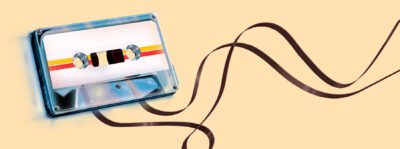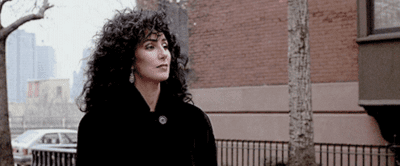'The Sound of Bed-Stuy' crew and the Tower of Sound (Courtesy Jess Colquhoun)
‘The Sound of Bed-Stuy’ doc explores a corner of NYC sound system culture
The mini-documentary spotlights a Brooklyn-based sound system collective that provides 'a microphone for the community'
The new short documentary “The Sound of Bed-Stuy” opens with a simple statement: “Sound system culture is not something you can easily explain, it’s just something you have to experience for yourself.” And then it spends the next six, rich minutes doing just that.
Anyone who’s ever been to a sound system session can attest to that very experience. Filmed during the summer of 2021, the mini-documentary — released by Stept Studios with support from Smirnoff on January 17 — spotlights New York City’s sound system culture via the Brooklyn collective Dub-Stuy.
Throughout the doc, members of the collective reflect on sound system culture’s impact on their own lives and New York City’s history. It culminates with the collective’s first in-person event since the beginning of the pandemic.
Quoc Pham founded Dub-Stuy in 2012 after attending Aba Shanti’s University of Dub party in London the previous year. Inspired by the thriving U.K. sound system culture, Pham not only wanted to replicate what he experienced, but also revitalize a New York sound system culture that died with the introduction of CDs in the ‘80s and introduce it to an entire new generation.
“Dub-Stuy is a New York story,” Pham says. “It’s about us interpreting our love for our neighborhood in a way that we know how to do it.”
Smirnoff tasked Stept Studios with finding authentic communities to spotlight that were making a difference — and that could incorporate the brand seamlessly into their events. In addition to New York’s sound system culture, Atlanta’s roller-skating scene and Chicago’s drag scene were featured in films.
Jess Colquhoun, the documentary’s director, says that Dub-Stuy stood out among other New York-based candidates they considered because of its mission.
“[Dub-Stuy’s] events are more than parties,” Colquhoun says. “There’s a real driving force behind them, which is to really give the community a safe space to come together. And for people who haven’t had a platform to amplify their voice, this is the place for them. The use of sound systems is a microphone for the community.”
Sound system culture originated in Kingston, Jamaica, during the 1950s. Speakers were made by hand from whatever scraps were available and served as a tool for the community to celebrate local musicians and forget the hardships of the work week. Sound systems also played a large role in protests and organizations advocating for social reform.
Dub-Stuy’s program director Hilla BunDem (né Eddie Hill) says that purpose hasn’t really changed some 70 years later. Many of the organization’s events are free or donation based, and often feature community speakers. BunDem, 31, works in mental health and specializes in suicide prevention and has aimed to grow Dub-Stuy into an organization that is equal parts party and community resource since he joined in the fall of 2020.
“I think the vision has expanded to create safe spaces and having people understand the culture,” BunDem says. “Especially in a time where the pandemic scared a lot of people and made them feel like [clubs or parties] weren’t going to be a reality anymore, now it’s like, we’re here, we’re for the community.”
In addition to creating an inclusive space for people to relax and dance, Pham says it’s also important to make the music welcoming instead of overwhelming.
Tower of power
The collective’s main sound system, the Tower of Sound, is a high-fidelity 15-kilowatt system with 12 speakers. Pham jokes that it’s like having “God power” when controlling the Tower of Sound; there’s a fine line between enjoyable and overkill.
“It’s not about loudness, at the end of the day,” Pham says. “It’s about control, it’s about precision, it’s about musicality. That’s my philosophy. It’s almost like driving a supercar on a country road. You don’t go 300 miles per hour, but you like the power.”
The true experience, Pham continues, is literally feeling the sound projected from Dub-Stuy’s Tower of Sound. On the range of sound, there are certain frequencies that cannot be heard with the human ear. You can, however, feel those sounds in your bones.
“It affects you on a molecular level,” Pham says. “That’s for me the next level of musical appreciation, being able to harness that energy.”
Feeling the vibration of the bass course through your body first hand can be spiritual. It can also be therapeutic, BunDem explains. “Dub-Stuy has created this realm of community and relief for people who might not be able to afford therapy,” he says. “They come and get sound therapy.”
Dub-Stuy is also a record label that has issued more than 30 vinyl releases. True to its roots as a platform for local musicians, Pham hopes these records will be the key to longevity and preserving the collective’s legacy.
In fact, legacy is something Pham has been thinking a lot about recently.
Storing, maintaining, and moving a sound system as big as Dub-Stuy’s is a labor of love. After 10 years of events and surviving a pandemic, Pham found himself questioning whether or not he wanted to continue moving forward with Dub-Stuy. Early team members had left and started families, and the music that introduced him to the culture wasn’t what young people were necessarily listening to.
He says this documentary reinvigorated his passion and has inspired him to think about what the collective’s next 10 years will look like.
“When you do something, sometimes you take it for granted,” Pham says. “You don’t take into [consideration] your legacy or how much you’ve achieved. Suddenly these people were like ‘Yeah we’re going to fly in and produce this thing,’ and I was like ‘Oh, maybe we do mean something.’ And in a way, it’s like the documentary is the beginning of a new chapter for Dub-Stuy.”
Watch the entire documentary here:
5 tracks that founder Quoc Pham says “define” the Dub-Stuy sound
“Nicodemus” :: Dubamine feat. Blackout JA
“Classic dub reggae sounds meets modern electronic music production with an iconic hook … a Dub-Stuy anthem.””
“Absolutely” :: Dub-Stuy feat. Blakkamoore
“Party lyrics, minimalist 808 production and addictive bass line. This is sound system music 101.”
“Nah Sell Out” :: Dub-Stuy feat. Burro Banton
“A remake of a classic theme connecting the dots between dancehall, hip hop and bass music. Featuring dancehall godfather Burro Banton.”
“Kingdom” :: DJ Madd
“Drum-and-bass meets dubby sounds. The darker and heavier side of the label.”
“Surrealiste Skank” :: Von D
“Studio experimentation using analog gear combined with modern production techniques. A tribute to the great King Tubby.”
You might also like 


























